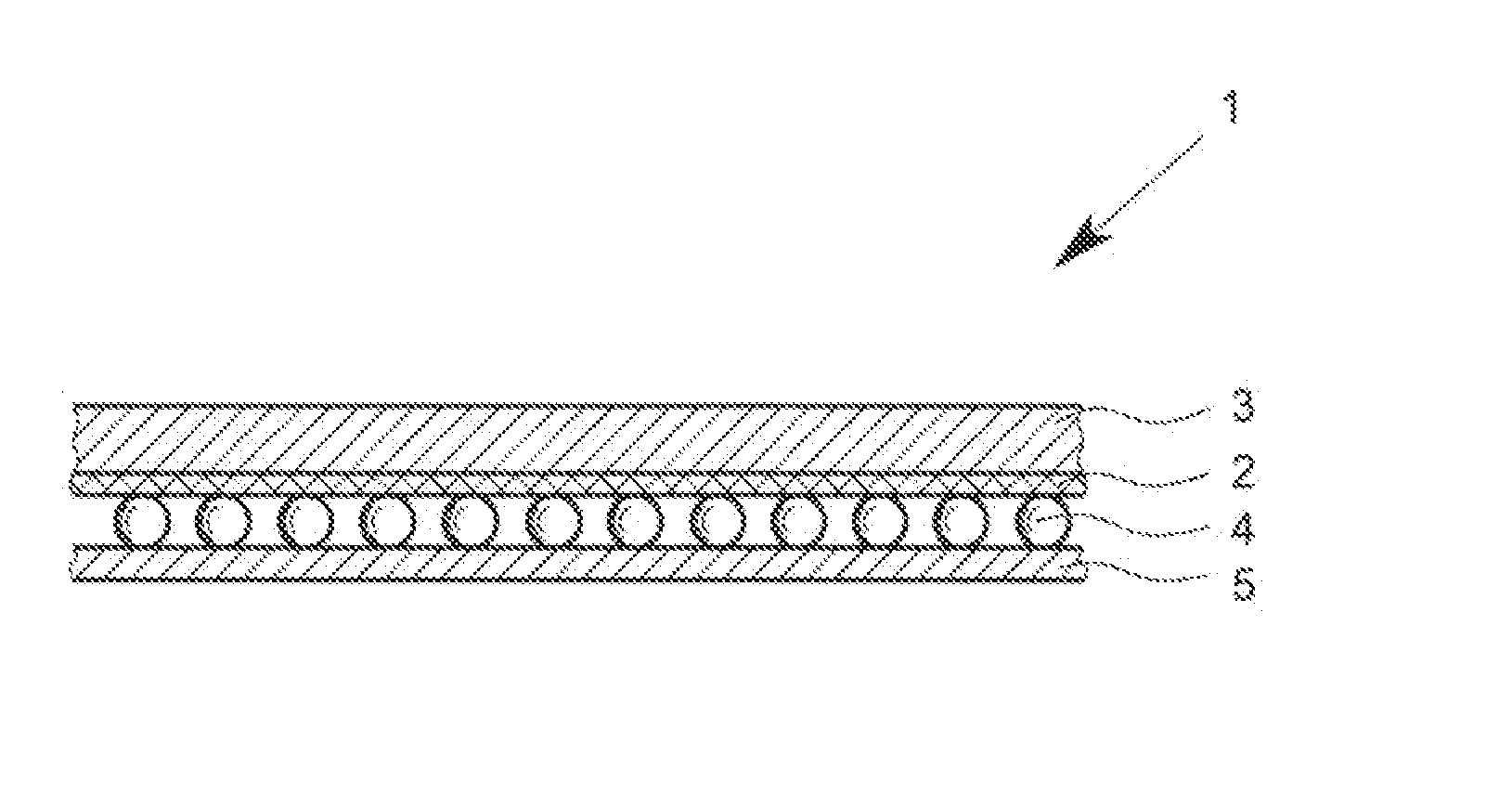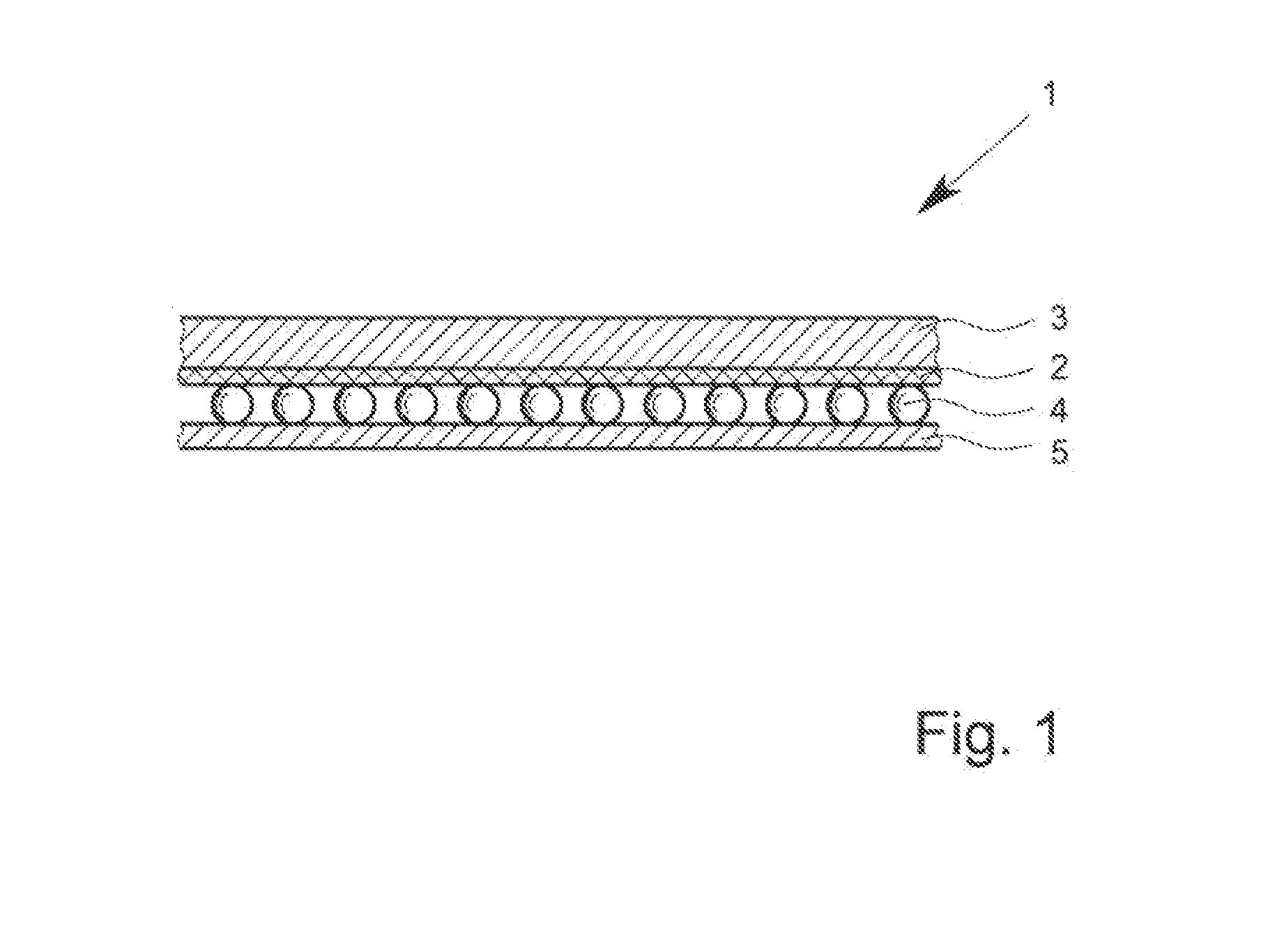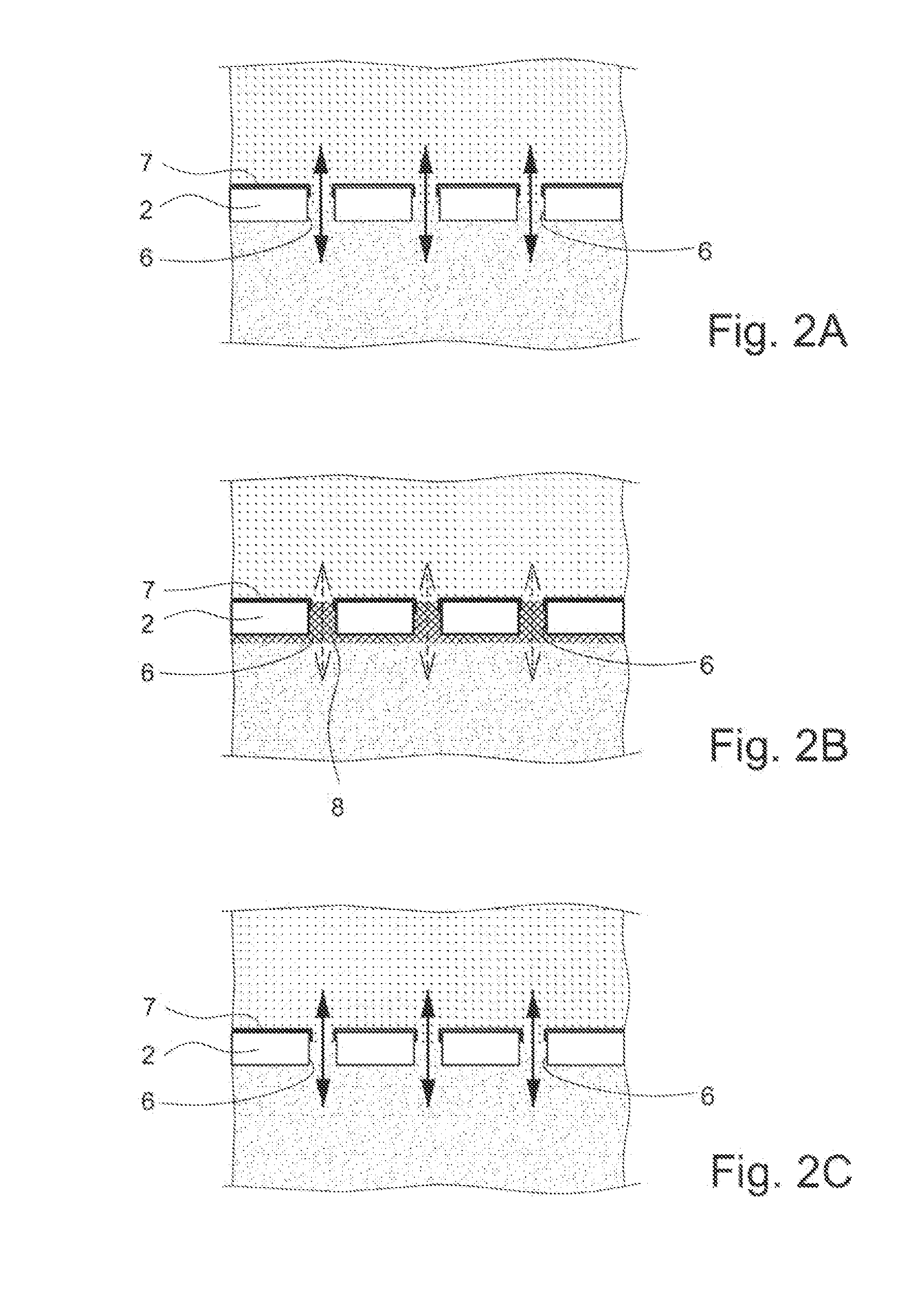Functional protective material, in particular for use in protective clothing
a protective material and functional technology, applied in the direction of bandages, fire extinguishers, weaving, etc., can solve the problems of insufficient breathability, serious physical harm, heat build-up,
- Summary
- Abstract
- Description
- Claims
- Application Information
AI Technical Summary
Benefits of technology
Problems solved by technology
Method used
Image
Examples
Embodiment Construction
[0029]Preferred embodiments and developments of the inventive functional protective material comprising an inventive membrane are disclosed herein and the subject matter of claims relating to the functional protective material. These will now be elucidated in detail.
[0030]The fundamental idea of the present invention consists in altering an operating parameter of the membrane such that the membrane can assume two different operating states, depending on the value of the operating parameter. The micropores of the membrane are open in the first operating state and at least predominantly closed in the second operating state of the membrane.
[0031]There are various possible ways to realize a membrane having a controllable, specifically switchable, porosity.
[0032]Different operating parameters of the membrane can be influenced. One conceivable membrane, for example, is alterable in its lateral path resistance and works in the manner of a PTC or NTC resistor.
[0033]In a particularly preferr...
PUM
| Property | Measurement | Unit |
|---|---|---|
| operating temperature | aaaaa | aaaaa |
| operating temperature | aaaaa | aaaaa |
| thickness | aaaaa | aaaaa |
Abstract
Description
Claims
Application Information
 Login to View More
Login to View More - R&D
- Intellectual Property
- Life Sciences
- Materials
- Tech Scout
- Unparalleled Data Quality
- Higher Quality Content
- 60% Fewer Hallucinations
Browse by: Latest US Patents, China's latest patents, Technical Efficacy Thesaurus, Application Domain, Technology Topic, Popular Technical Reports.
© 2025 PatSnap. All rights reserved.Legal|Privacy policy|Modern Slavery Act Transparency Statement|Sitemap|About US| Contact US: help@patsnap.com



